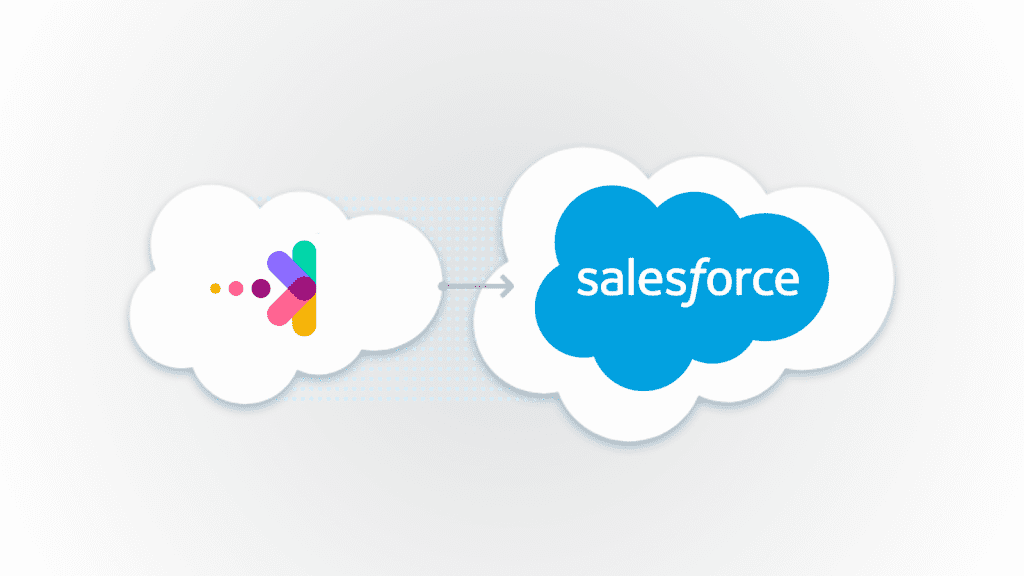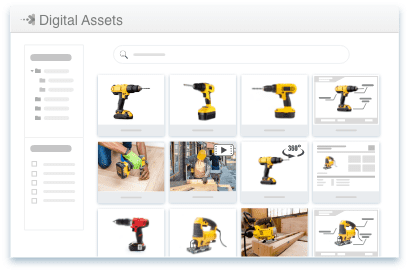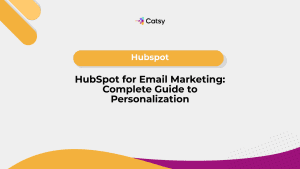Salesforce DAM: 5 Key Reasons to get a DAM that integrates with Salesforce

- Integrating a DAM with Salesforce streamlines workflows, enhances sales, ensures brand consistency, and improves collaboration for product-focused businesses.
- For companies managing large volumes of product images, an e-commerce DAM-Salesforce integration offers efficient cataloging and sharing capabilities.
- An e-commerce DAM solution optimizes asset management for traditional sales and e-commerce channels, positioning businesses for future growth.
In this Article
One of the reasons Reddit is popular is because it prioritizes user feedback. This explains why many users trust it with burning questions. One example is a user who wanted to know if their organization could use Salesforce as a digital asset management (DAM) solution.
According to the user, their business handles many product images, each linked to specific SKUs. So, they are exploring DAM platforms to streamline their process, which includes efficient uploading, cataloging, and sharing of images, and, importantly, tracking which SKUs have corresponding photos and which do not.
They’ve evaluated several DAM platforms but haven’t found one that fully meets their needs. This led them to consider a custom solution within their existing Salesforce system. The idea is to create and associate a custom SKU object with the relevant images (using files), leveraging Salesforce’s robust infrastructure.
However, they have some reservations, particularly regarding Salesforce’s capability to manage and handle over 300,000 images, each approximately 3 to 4 MB. So, the user went to the Salesforce subreddit to seek advice from the community on whether there is an existing solution within Salesforce that could address their needs or if there are better integration options that they should consider.
Most commenters advised against using Salesforce as a DAM solution. One stated: “If your requirement is “efficient uploading, cataloging, and sharing of images” then I would suggest that Salesforce isn’t a great fit, even with customization.” The consensus in the community is that the user should consider a dedicated digital asset management system that integrates with Salesforce. This is also our position; we will explain why in the following paragraphs.
Understanding Salesforce
Before we proceed, let’s take a moment to understand Salesforce and why it’s crucial for many businesses today.
Salesforce is a customer relationship management (CRM) platform that helps businesses manage their interactions with current and potential customers. Its cloud-based nature means it can be accessed from anywhere with an internet connection, providing flexibility and scalability to businesses of all sizes.
At its core, Salesforce is designed to help companies track customer interactions, streamline sales processes, and, ultimately, grow their business. However, it’s not just a glorified address book. Salesforce offers a suite of cloud-based applications that cover everything from sales and customer service to marketing automation and analytics.
The beauty of the CRM platform lies in its flexibility and scalability. Salesforce benefits all businesses, whether small startups or multinational corporations; it can be tailored to meet unique needs. And because it’s cloud-based, organizations can access data from anywhere with an internet connection, making it perfect for the increasingly mobile workforce.
But Salesforce isn’t just about storing data—it’s about turning that data into actionable insights. Its robust reporting and analytics tools help businesses make informed decisions based on real-time data, which is why Salesforce has become such a critical tool for companies looking to stay competitive in the current environment.
What features and functionalities does Salesforce offer?
We know what Salesforce does – it turns data into actionable insights. The platform achieves this objective through several features and functionalities, including:
- Customer data management: Salesforce centralizes customer data perfectly. It’s like having a digital Rolodex on steroids. You can store and access customer details, communication history, and interaction records all in one place. This 360-degree view of the customer allows for more personalized and effective engagements.
- Sales pipeline management: Have you ever tried to track multiple sales deals on sticky notes? Salesforce helps to prevent this terrible situation from occurring. Its pipeline management tools allow sales teams to track leads, opportunities, and deals through every stage of the sales process. You can see at a glance where each potential sale stands, forecast revenue, and identify bottlenecks in the sales funnel.
- Marketing automation: Sales isn’t the only functionality Salesforce offers. It offers robust marketing automation, helping businesses create, manage, and track marketing campaigns across various channels. These tools provide functionalities for email marketing, social media marketing, customer segmentation, and more, helping businesses reach their target audience effectively.
- Customer service management: Salesforce’s Service Cloud helps manage customer inquiries, track support tickets, and even power self-service portals. It ensures that customer issues don’t fall through the cracks and helps maintain a consistent level of service across all touchpoints.

Overview of Digital Asset Management
Granted, Salesforce is an excellent customer relationships manager. The platform excels at streamlining business processes, which is why it is popular. However, some users, such as the Reddit user we met earlier, struggle with another crucial aspect of their operations: managing a growing library of digital assets.
As we’ve seen, Salesforce handles customer data, sales pipelines, and marketing campaigns with aplomb. But what about the thousands of product images, sales and marketing materials, and other digital files that support these efforts?
This is where the DAM concept comes into play. Just as Salesforce brings order to customer data, DAM software brings structure and efficiency to an organization’s digital content. Understanding what a DAM solution is and how it can complement Salesforce is crucial for businesses looking to streamline their operations and maximize their digital resources.
What is DAM software?
DAM software is a specialized platform designed to streamline how organizations store, manage, and distribute digital assets. Digital assets are files like product images, videos, spec sheets, and marketing collateral.
An enterprise digital asset management solution solves a common problem that many businesses face: disordered digital files stored across various devices, departments, and platforms. It’s the antidote to the “Where did I save that file again?” syndrome that plagues many organizations.
With DAM software, businesses can:
- Store digital assets in one secure and accessible location.
- Organize the assets efficiently. This means users can tag and categorize the assets, making it easy to find what you need when you need it.
- Control access to assets in a way that no traditional storage solutions can manage. You can control who can view, edit, or use specific assets.
- Track the usage of each item in the database. You can see how and where assets are used across your organization, how often they have been downloaded, etc.
- Archive outdated assets. This helps track different asset versions and ensures everyone uses the most up-to-date files.
Importance of DAM in content-driven marketing and sales
Content-driven marketing focuses on creating and distributing valuable, relevant content to captivate and engage a specific audience. The goal is to drive profitable customer action by enhancing brand visibility and customer engagement through storytelling.
Content marketing supports sales in various ways, including attracting potential customers through valuable content, nurturing leads, helping customers remember and recognize your brand, and creating personalized buyer experiences. In other words, content rules in the present business environment.
Where content rules, marketing and sales teams constantly create and deploy many digital assets—from product images and promotional videos to case studies and pitch decks. This content fuels customer engagement, drives sales, and builds brand identity. However, without an effective system to manage these assets, even the most powerful CRM platform, like Salesforce, can’t reach its full potential.
DAM software is the missing link. It aggregates digital assets from various sources, enabling marketing and sales teams to:
- Quickly locate and deploy the right content at the right time
- Ensure brand consistency across all customer touchpoints
- Collaborate more effectively on content creation and distribution
- Track content performance and gather insights for future strategies
When integrated with Salesforce, a DAM solution creates a robust platform for content-driven marketing and sales. Salesforce provides the customer data and interaction tracking, while DAM supplies the content management capabilities. Together, they allow for highly personalized, timely, and effective customer communications.
For instance, a sales rep using Salesforce can instantly access relevant product images from the DAM system, tailoring their pitch to a specific customer’s needs. Marketers can ensure that every campaign in Salesforce is supported by up-to-date, on-brand assets stored in the DAM.
Moreover, as organizations scale and their content libraries grow, DAM becomes increasingly crucial. It prevents content segregation, reduces redundancy, and ensures that valuable digital assets are fully utilized across the organization.
This DAM Salesforce integration offers the most evident hint at why you should get a solution with pre-built CRM connectors. Let’s discuss these reasons.

Salesforce DAM: Why You Should Get a DAM That Integrates With Salesforce
1. Streamlined and optimized workflow and increased productivity
Let’s assume the Reddit user we met earlier works for a power tools manufacturer. As you may recall, the user said the organization has over 300,000 images. Suppose each image requires specific metadata such as model number, specifications, and marketing copy. Traditionally, the company’s sales reps must switch between Salesforce and a separate image library (Google Drive, Dropbox, etc.) to access this information.
Digging through cloud storage drives is the most imprudent use of time when you have 300,000 images. The amount of platform-switching required to complete a single task is unimaginable.
With integration, everything the sales reps need is in one place. They can pull customer history, product recommendations, and related marketing materials from a single platform. This seamless experience allows them to focus on what really matters – understanding the customer’s needs and closing the sale.
2. Enhanced sales effectiveness
A DAM integrated with Salesforce gives sales teams the tools they need to close deals faster and more effectively. The platform provides quick access to up-to-date sales materials and enables personalized content delivery, significantly enhancing sales performance.
How does this work?
Suppose a sales rep meets with a potential customer interested in a particular power tool model. With a DAM integrated into Salesforce, the rep can instantly access detailed product specifications, high-resolution images, and customer testimonials. This ability to quickly provide comprehensive information builds credibility and positions the sales rep as an expert.
Furthermore, a digital asset management software enables personalized content delivery by leveraging customer data stored in Salesforce. For instance, if the CRM indicates that a customer is interested in cordless tools, the sales rep can easily access and share relevant product brochures and comparison charts. This tailored approach demonstrates a deep understanding of the customer’s needs and increases the likelihood of a successful sale.
Finally, a DAM integrated with Salesforce improves response time to customer inquiries. When a customer requests additional information, sales reps can swiftly locate and share the necessary assets, ensuring timely and effective communication. This responsiveness fosters customer satisfaction and strengthens relationships.
3. Consistent brand messaging across channels
Maintaining a consistent brand image is one of the most effective strategies for building trust and recognition in the market. Customers want the same experience whenever they contact sales reps or encounter your products in digital stores. A DAM Salesforce integration is an excellent tool for achieving this consistency.
DAM software aggregates all relevant brand assets, including logos, color palettes, and style guides, establishing a single source of truth. This eliminates the risk of using outdated or incorrect brand elements and ensures all marketing and sales materials align with the company’s brand identity.
For instance, a power tools manufacturer can store approved product images, packaging designs, and marketing copy in a DAM. Sales teams can then access these assets directly from Salesforce, guaranteeing that all customer interactions reflect the company’s desired brand image.
Moreover, a DAM solution helps prevent the misuse of brand assets. It controls access to specific assets and ensures only authorized personnel can use and modify them. This feature proves crucial when dealing with time-sensitive promotions or region-specific marketing campaigns.
Let’s say the power tools company is running a limited-time promotion on professional-grade sanders. The marketing team can set expiration dates on these promotional assets within the DAM. Once the promotion ends, these materials are automatically archived or flagged as outdated, preventing sales reps from accidentally using expired offers in their communications.
4. Improved asset utilization tracking and insights
The DAM-Salesforce combination is a valuable resource for insights into asset performance and usage. This integration opens marketers’ eyes to the impact of their digital assets on customer interactions.
How so?
Imagine a power tools company that has just launched a new line of professional-grade circular saws. With an integrated DAM-Salesforce system, they can track how often sales reps use specific product images, spec sheets, or demo videos in customer interactions. But it doesn’t stop there – they can link this usage data directly to sales outcomes. For example, are customers more likely to purchase after viewing a particular product video? Does including a comparison chart in proposals lead to higher close rates? These are the kinds of questions we can now answer with data-driven precision.
This information supports more thoughtful decision-making for content creation. Say the company notices that an infographic comparing their circular saw’s features to competitors’ models is frequently used in successful sales pitches. With this knowledge, the marketing team can create similar assets for other product lines, potentially boosting performance. On the flip side, if they see that a particular product brochure is rarely used or doesn’t seem to influence sales, they can either improve it or redirect resources to more compelling content types.
5. Enhanced cross-departmental collaboration
An organization works best when all stakeholders know what is happening and understand their role in helping the company attain its goals. For example, the smooth collaboration between the departments of a power tools manufacturer can be the difference between a product launch that cuts through the noise and one that falls flat.
Integrating a DAM with Salesforce creates a virtual workspace where sales, marketing, and creative teams can work harmoniously like a well-oiled machine. Picture this scenario: A power tools manufacturer is gearing up to launch a new line of cordless impact wrenches. The marketing team has been hard at work creating high-quality visuals and copy, while the creative team has produced sleek product renders and demonstration videos. With a single source of truth established by DAM software and accessible through Salesforce, the sales team can instantly tap into these resources as they prepare their pitches.
But the benefits don’t stop at convenience. This DAM integration creates a more dynamic feedback loop between departments. Let’s say a sales rep notices that customers frequently ask about the battery life of the new impact wrenches, but this information isn’t prominently featured in the current marketing materials. Using the integrated system, they can easily flag this insight for the marketing team. The marketing team can create new assets highlighting battery performance, which will be immediately available to all sales reps through Salesforce.

Final Thoughts
Integrating a DAM solution with Salesforce can transform how businesses handle digital assets, particularly in product-focused environments like manufacturing. Some of the key benefits include:
- Streamlined workflows that save time and boost productivity
- Enhanced sales effectiveness through quick access to relevant materials
- Consistent brand messaging across all channels
- Improved asset utilization tracking for data-driven decision-making
- Enhanced cross-departmental collaboration
For the Reddit user’s organization, an integrated DAM-Salesforce solution addresses the challenges of efficient image uploading, cataloging, and sharing.
However, one more critical point to consider is the type of DAM software you choose to integrate Salesforce with.
When searching for a DAM solution to integrate with Salesforce, companies should prioritize an e-commerce DAM solution. This specialized solution is tailored for product-based companies that want to leverage the revenue potential of e-commerce while still utilizing traditional sales channels.
An e-commerce DAM like Catsy’s DAM goes beyond simple asset storage. It’s designed to handle product-specific metadata, manage high-volume assets, and seamlessly integrate with e-commerce platforms. For the Reddit user’s company, this means efficiently managing those 300,000 images and ensuring they’re optimized for both Salesforce and e-commerce use.
With an e-commerce DAM, the company could:
- Automatically link product images to specific SKUs in both Salesforce and their e-commerce platform
- Ensure that product content is consistent across all sales channels
- Easily create and manage variations of product images for different platforms (e.g., high-res for print, web-optimized for online)
- Track which images are driving the most engagement and sales across channels
Choosing an e-commerce DAM that integrates with Salesforce allows businesses to create a unified system supporting their traditional sales processes and e-commerce efforts. This approach solves the immediate challenges of asset management and positions the company for future growth in the digital marketplace.
In the end, the Reddit user’s instinct to seek a solution within their existing Salesforce system was on the right track. However, rather than building a custom solution, integrating an e-commerce DAM with Salesforce offers a more robust, scalable, and feature-rich solution. It’s not just about managing assets; it’s about leveraging those assets to drive sales and grow the business across all channels. See Catsy PIM and DAM in action today.
This integration offers several benefits, including streamlining workflows by providing quick access to digital assets directly within the Salesforce interface, enhancing sales effectiveness by enabling personalized content delivery based on customer data, and improving asset utilization tracking, which provides valuable insights for data-driven decision-making.
A DAM integrated with Salesforce significantly enhances sales productivity. Sales representatives gain quick access to high-quality product images, marketing materials, and customer information within a single platform. This eliminates the need to switch between multiple applications, saving valuable time. Moreover, the ability to personalize content based on customer data empowers sales reps to deliver tailored presentations, increasing the likelihood of closing deals.
Yes, many DAM platforms offer integration options with Salesforce. However, the depth and breadth of integration capabilities vary significantly. As such, evaluating your existing DAM’s functionalities and comparing them to the integration options available is essential. Considering a dedicated DAM solution designed for Salesforce integration might be beneficial if your current DAM lacks the necessary features or the integration process is complex.
An e-commerce DAM is specifically designed to meet the needs of product-based companies engaged in both traditional and online sales. Unlike a standard DAM, an e-commerce DAM is optimized to handle product-specific metadata and high volumes of product images. E-commerce DAMs also typically offer seamless integration with e-commerce platforms, ensuring consistent product information across all sales channels. This specialized focus makes e-commerce DAMs particularly suitable for companies looking to manage their digital assets while leveraging e-commerce opportunities.
The difficulty of implementing a DAM-Salesforce integration can vary depending on several factors, including the specific DAM solution chosen, the complexity of your existing Salesforce set-up, and your organization’s technical capabilities. However, many modern DAM solutions offer pre-built integrations with Salesforce, which can significantly simplify the process. The implementation typically involves connecting the two systems, mapping data fields, and configuring user permissions. While this may require some initial setup time and potential assistance from IT or the DAM provider, the long-term benefits in terms of improved efficiency and data management often outweigh the implementation effort. It’s also worth noting that many DAM providers offer support and guidance throughout the integration process, helping to smooth any potential challenges.




